© 2014-


Radio Veronica - 1960’s History (3)
1961
With complete management and financial control the Verweij brothers set about improving Radio Veronica in every way possible. They worked hard at creating and cultivating a respec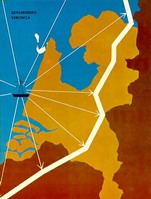 table business-
table business-
Throughout 1961 improvements were made in many areas by the new management and as a direct result increasing interest was shown by advertisers and commercial income soared. Further operational improvements were made as a result of this increased revenue -
Radio Veronica also benefited from the short-
1962
By the beginning of 1962 Radio Veronica, after a shaky start, had become as popular and profitable in Holland (perhaps even more so) as her contemporaries Radio Mercur and Radio Nord had in Scandinavia. A listener's club -
Radio Veronica also seemed to be under no apparent threat at this time from the Dutch government, unlike her Scandinavian contemporaries. During the first half of 1962 four Scandinavian governments had enacted new legislation to close the stations off their coasts, but despite setting up a Commission in July 1962 to draft a Bill outlawing offshore radio, the Dutch Government, partly because of its own instability and partly because of the immense popularity of Radio Veronica, did not actively pursue the introduction of legislation to close the station.
1963-
Radio Veronica continued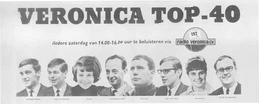 to flourish throughout 1963, attracting larger audiences and increasing numbers of advertisers in the apparent absence of any Government action being taken to silence it.
to flourish throughout 1963, attracting larger audiences and increasing numbers of advertisers in the apparent absence of any Government action being taken to silence it.
In 1964 the Veronica Top 40 chart was introduced and the first Top 40 programme was broadcast on 1st January 1965. There were also some live programmes from the Borkum Riff, all of which added considerably to the vibrant sound of the station -
The station's operating base was also changed in November 1964. The original vessel, Borkum Riff was replaced by the larger and more luxurious Nordeney, an ex-
1966-
1966 saw the introduction of some more major changes for Radio Veronica. On 1st January a news service was introduced – two minute bulletins each hour. The format of the station was changed from quarter and half hour long programme segments to two or three hour shows, along the lines of the British offshore stations. The station also started broadcasting more live programmes from the radio ship rather than relying on a taped output. These changes were brought about following a visit to the United States by the station's management to study the latest broadcasting and programme format techniques.
During the latter part of 1966 and early 1967 Radio Veronica briefly encountered competition from two other Dutch language stations, Radio Dolifjn and later Radio 227. Both these would-
However, neither station was commercially successful, and the closure of the Dutch language broadcasts from off the British coast meant once again that Radio Veronica had the Dutch market to itself, although neither of the potential rivals had made an impact on the established station's audience or advertising figures.
Ironically Radio Veronica attracted a substantial British audience in 1968 following the sudden closure of both Radio Caroline stations in March of that year. Response from British listeners to the station's output was significant enough for the management to introduce a limited amount of English language programming. Also from 15th July 1968 Radio Veronica started an 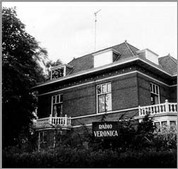 'International Service' hiring airtime on Radio Popularie de Mallorca and broadcast a series of pro
'International Service' hiring airtime on Radio Popularie de Mallorca and broadcast a series of pro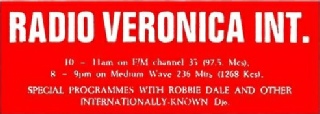 grammes hosted by DJs from the station.
grammes hosted by DJs from the station.
In March 1969 Radio Veronica moved its land-

Radio Veronica’s new headquarters in Hilversum
The station’s coverage area as shown in an early advertising rate card

Click on picture to enlarge
History
Key Dates
Ships and Location
Technical
Staff
Programmes






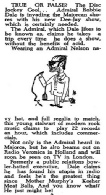
Majorca Daily Bulletin
24th July 1968
Courtesy Hans Knot
Treasure Chest


Back to Netherlands/Belgium Gallery


Back to Radio Veronica
